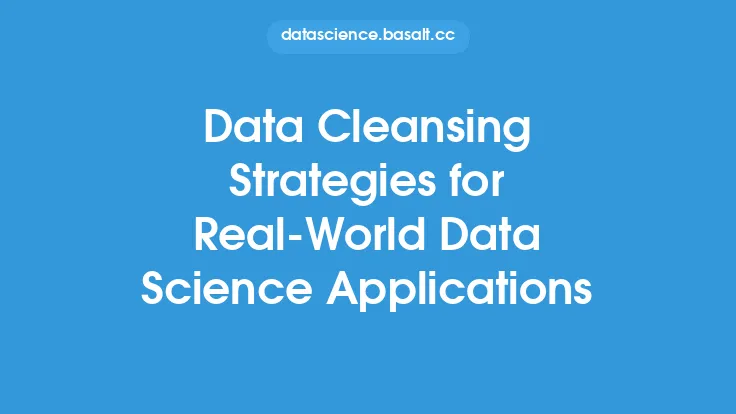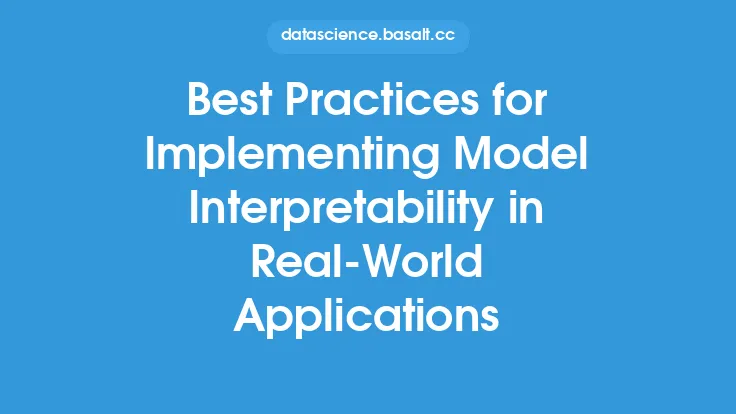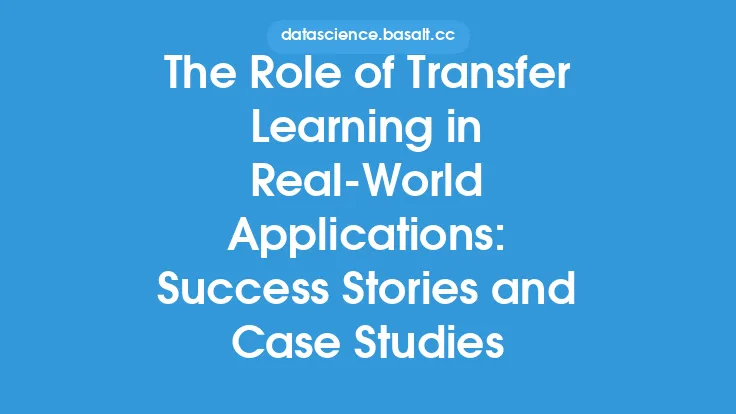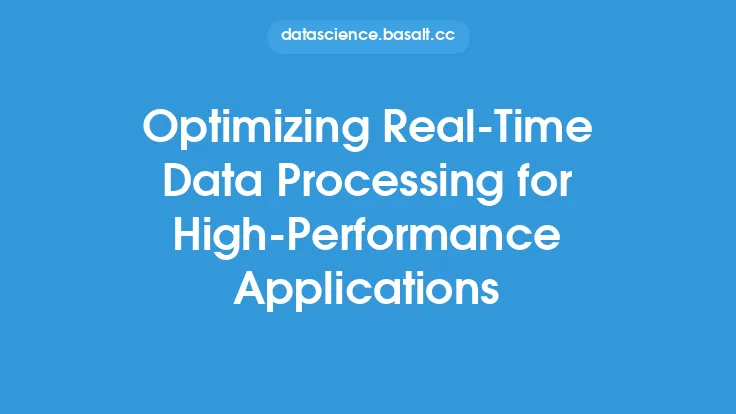Machine learning models are only as good as their ability to generalize to new, unseen data. As such, evaluating the performance of these models is a crucial step in the machine learning pipeline. In real-world applications, model evaluation strategies play a critical role in ensuring that the deployed models are reliable, accurate, and fair. In this article, we will delve into the various model evaluation strategies that are commonly used in real-world applications, highlighting their strengths, weaknesses, and use cases.
Introduction to Model Evaluation Strategies
Model evaluation strategies are designed to assess the performance of a machine learning model on a given task. These strategies can be broadly categorized into two types: holdout methods and cross-validation methods. Holdout methods involve splitting the available data into training and testing sets, where the model is trained on the training set and evaluated on the testing set. Cross-validation methods, on the other hand, involve splitting the data into multiple folds, where the model is trained and evaluated on each fold, and the results are averaged across all folds. Both types of methods have their advantages and disadvantages, and the choice of which one to use depends on the specific problem and dataset.
Types of Model Evaluation Strategies
There are several types of model evaluation strategies that are commonly used in real-world applications. These include:
- Holdout Method: This is one of the simplest model evaluation strategies, where the available data is split into training and testing sets. The model is trained on the training set and evaluated on the testing set.
- K-Fold Cross-Validation: This method involves splitting the data into k folds, where the model is trained on k-1 folds and evaluated on the remaining fold. The results are averaged across all k folds.
- Leave-One-Out Cross-Validation: This method involves training the model on all data points except one, and evaluating it on the remaining data point. This process is repeated for all data points, and the results are averaged.
- Stratified Cross-Validation: This method involves splitting the data into folds, while maintaining the same class distribution in each fold. This is particularly useful for imbalanced datasets.
- Time Series Cross-Validation: This method involves splitting the data into training and testing sets based on time, where the model is trained on past data and evaluated on future data.
Evaluating Model Performance
Evaluating model performance is a critical step in the model evaluation process. There are several metrics that can be used to evaluate model performance, including accuracy, precision, recall, F1 score, mean squared error, and mean absolute error. The choice of metric depends on the specific problem and dataset. For example, accuracy is a good metric for balanced classification problems, while precision and recall are more suitable for imbalanced classification problems. Mean squared error and mean absolute error are commonly used for regression problems.
Hyperparameter Tuning
Hyperparameter tuning is an essential step in the model evaluation process. Hyperparameters are parameters that are set before training the model, such as learning rate, regularization strength, and number of hidden layers. The goal of hyperparameter tuning is to find the optimal set of hyperparameters that results in the best model performance. There are several hyperparameter tuning strategies, including grid search, random search, and Bayesian optimization. Grid search involves trying out all possible combinations of hyperparameters, while random search involves randomly sampling the hyperparameter space. Bayesian optimization involves using a probabilistic approach to search for the optimal hyperparameters.
Model Selection
Model selection is the process of choosing the best model for a given problem. There are several factors to consider when selecting a model, including model performance, interpretability, and computational complexity. Model performance is typically evaluated using metrics such as accuracy, precision, and recall. Interpretability refers to the ability to understand how the model makes predictions, and is particularly important for high-stakes applications such as healthcare and finance. Computational complexity refers to the amount of computational resources required to train and deploy the model.
Real-World Applications
Model evaluation strategies have numerous real-world applications, including:
- Predictive Maintenance: Model evaluation strategies can be used to evaluate the performance of predictive maintenance models, which are used to predict equipment failures and schedule maintenance.
- Credit Risk Assessment: Model evaluation strategies can be used to evaluate the performance of credit risk assessment models, which are used to predict the likelihood of loan defaults.
- Medical Diagnosis: Model evaluation strategies can be used to evaluate the performance of medical diagnosis models, which are used to predict disease diagnosis and treatment outcomes.
- Recommendation Systems: Model evaluation strategies can be used to evaluate the performance of recommendation systems, which are used to recommend products and services to users.
Challenges and Limitations
Model evaluation strategies are not without challenges and limitations. One of the main challenges is the availability of high-quality data, which is required to train and evaluate machine learning models. Another challenge is the presence of bias in the data, which can result in biased models that are unfair and discriminatory. Additionally, model evaluation strategies can be computationally expensive, particularly for large datasets and complex models.
Future Directions
The field of model evaluation is constantly evolving, with new strategies and techniques being developed to address the challenges and limitations of existing methods. Some of the future directions in model evaluation include:
- Explainable AI: There is a growing need for explainable AI, which involves developing models that are transparent and interpretable.
- Transfer Learning: Transfer learning involves using pre-trained models as a starting point for new tasks, which can reduce the need for large amounts of training data.
- Adversarial Robustness: Adversarial robustness involves developing models that are robust to adversarial attacks, which are designed to mislead the model.
- Uncertainty Estimation: Uncertainty estimation involves developing models that can estimate their own uncertainty, which is critical for high-stakes applications.





